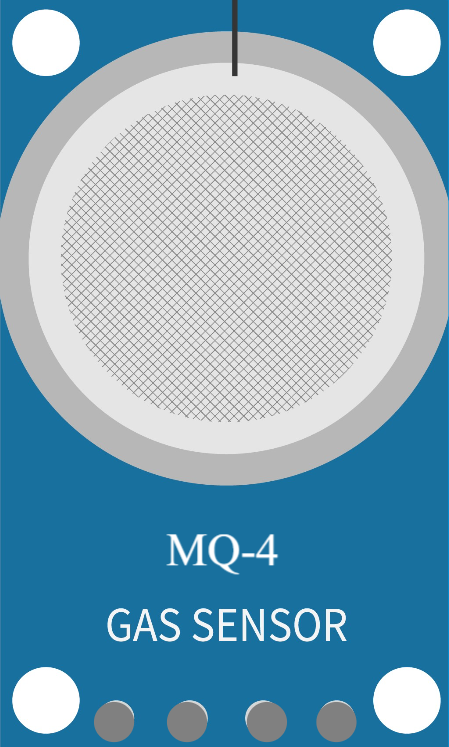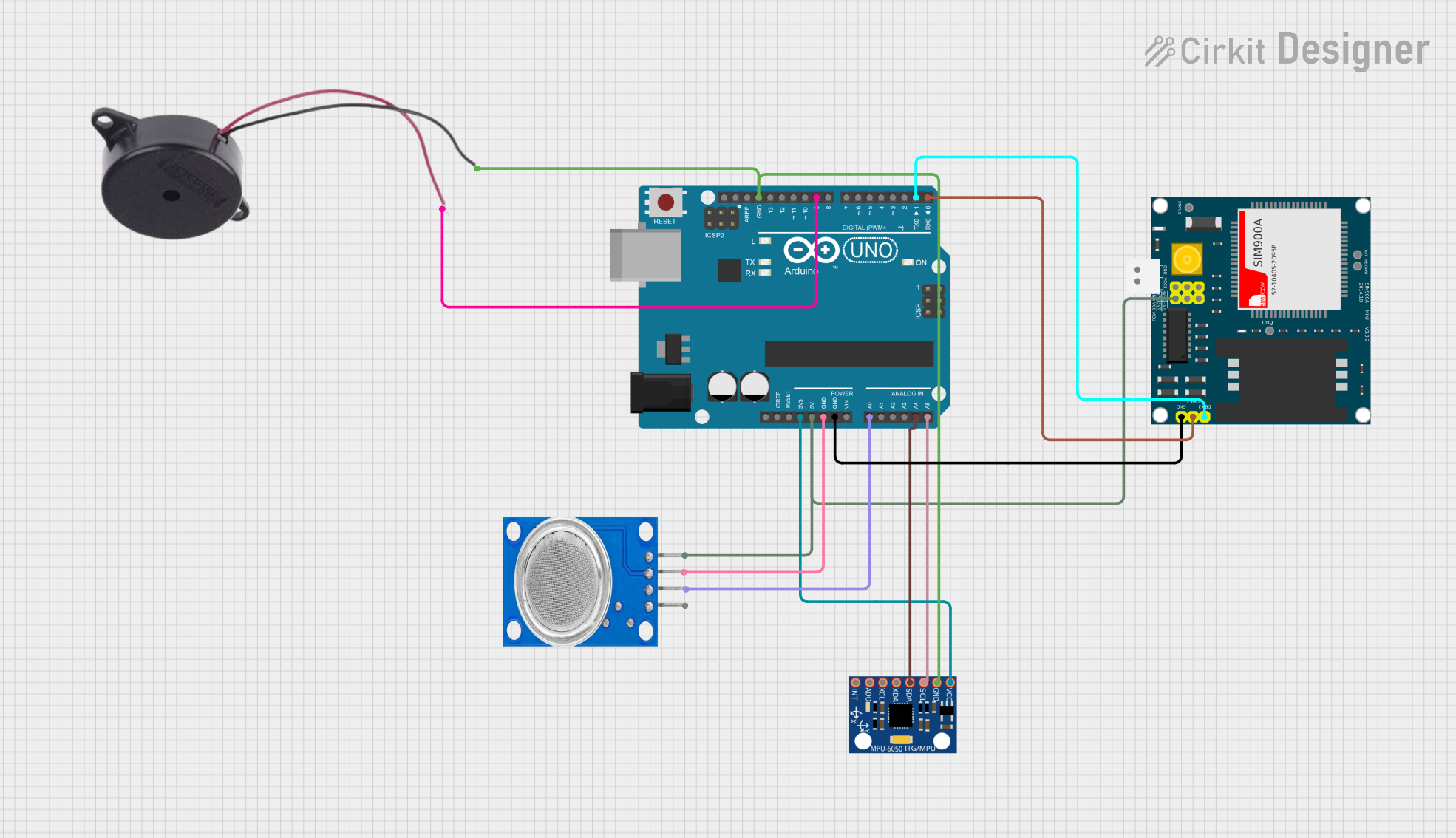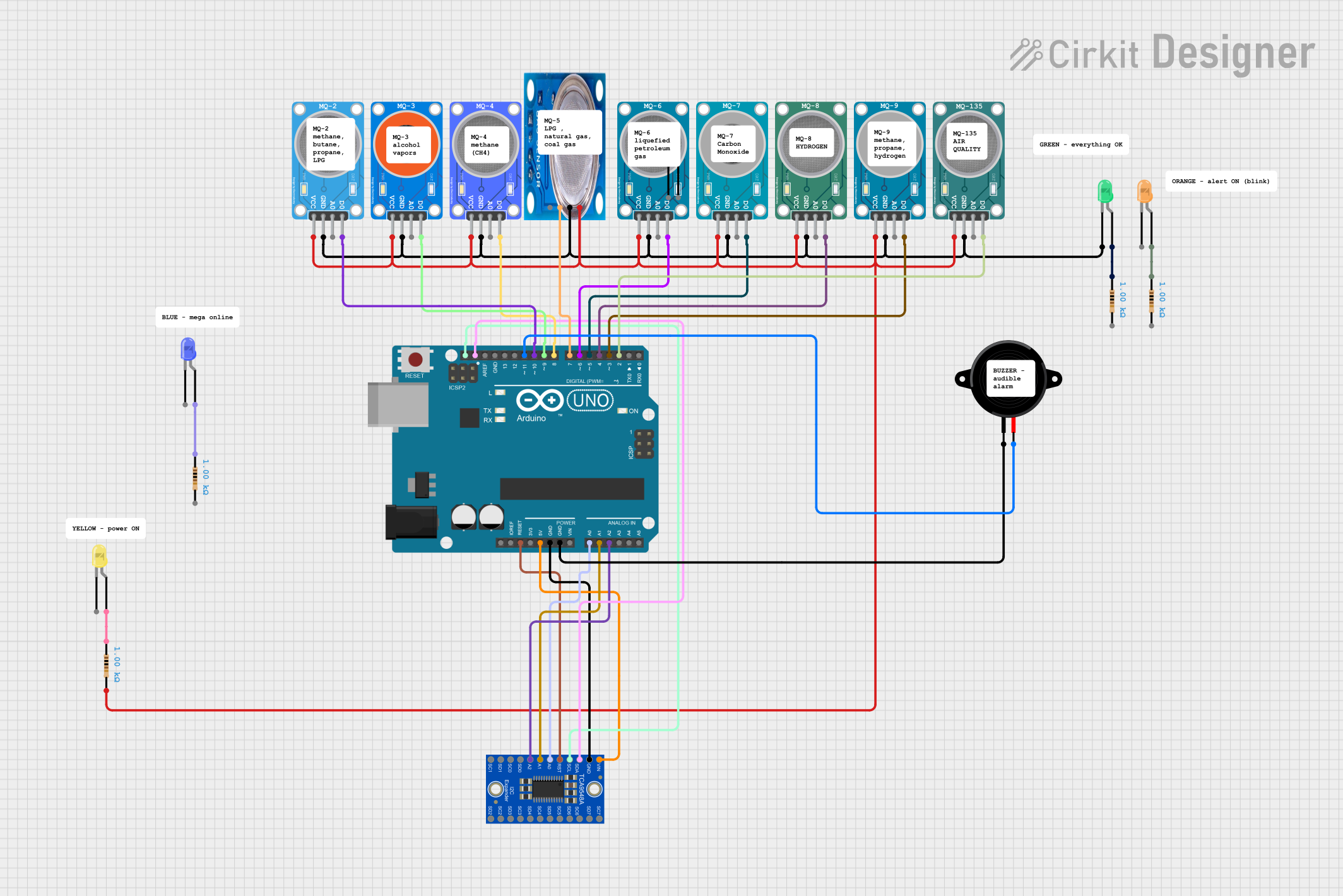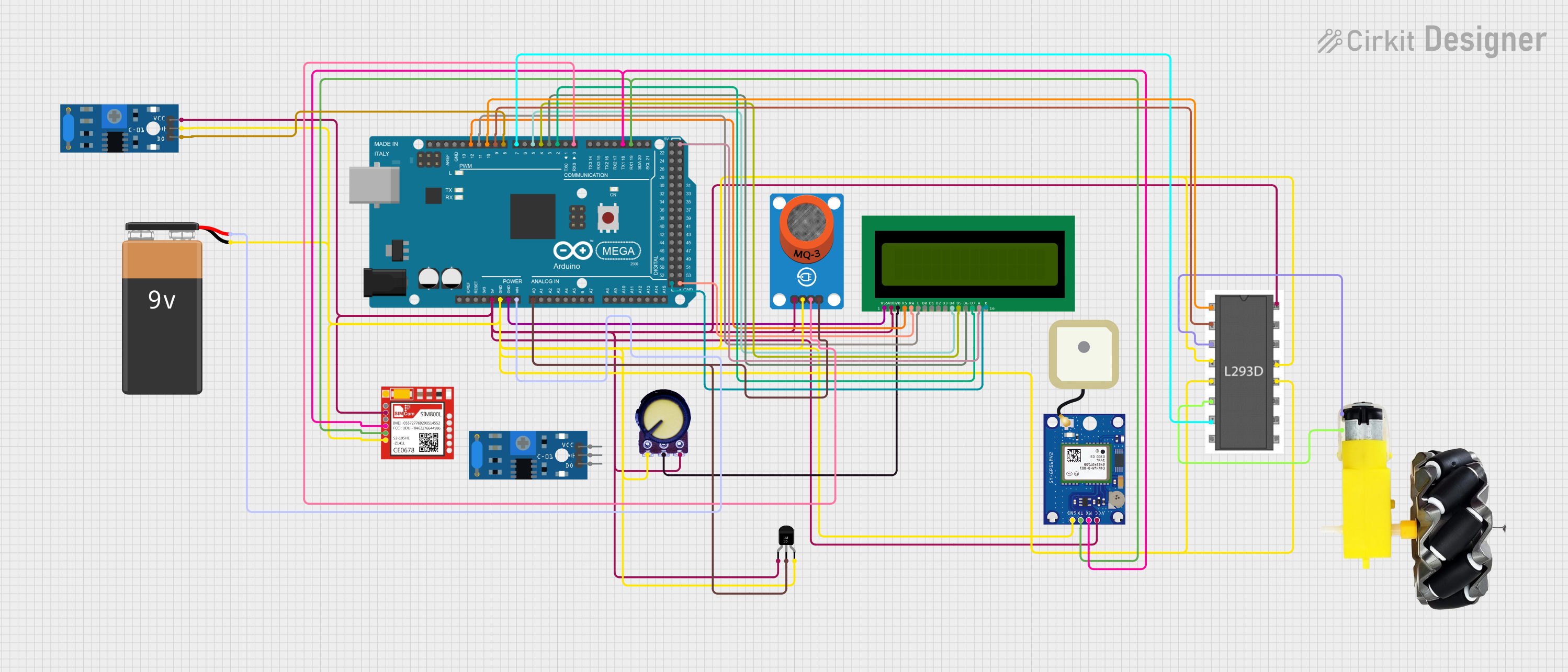
How to Use MQ4: Examples, Pinouts, and Specs

 Design with MQ4 in Cirkit Designer
Design with MQ4 in Cirkit DesignerIntroduction
The MQ4 is a gas sensor designed to detect methane (CH₄) and natural gas concentrations in the air. It operates on the principle of resistive change, where the sensor's resistance varies in the presence of target gases. The MQ4 provides an analog output proportional to the gas concentration, making it suitable for a wide range of applications.
Explore Projects Built with MQ4

 Open Project in Cirkit Designer
Open Project in Cirkit Designer
 Open Project in Cirkit Designer
Open Project in Cirkit Designer
 Open Project in Cirkit Designer
Open Project in Cirkit Designer
 Open Project in Cirkit Designer
Open Project in Cirkit DesignerExplore Projects Built with MQ4

 Open Project in Cirkit Designer
Open Project in Cirkit Designer
 Open Project in Cirkit Designer
Open Project in Cirkit Designer
 Open Project in Cirkit Designer
Open Project in Cirkit Designer
 Open Project in Cirkit Designer
Open Project in Cirkit DesignerCommon Applications
- Gas leak detection in residential and industrial environments
- Methane monitoring in mining and oil industries
- Natural gas detection in HVAC systems
- Air quality monitoring systems
- DIY electronics and Arduino-based projects
Technical Specifications
The MQ4 sensor is a robust and reliable component with the following key specifications:
| Parameter | Value |
|---|---|
| Operating Voltage | 5V DC |
| Load Resistance (RL) | Adjustable (typically 10 kΩ) |
| Heater Voltage (VH) | 5V ± 0.1V |
| Heater Power Consumption | ≤ 900 mW |
| Detection Range | 200 ppm to 10,000 ppm (methane) |
| Preheat Time | ≥ 24 hours for stable operation |
| Output Signal | Analog voltage |
| Operating Temperature | -20°C to 50°C |
| Humidity Range | ≤ 95% RH |
| Sensor Life Span | ≥ 5 years |
Pin Configuration and Descriptions
The MQ4 sensor typically comes with four pins or leads. Below is the pinout description:
| Pin | Name | Description |
|---|---|---|
| 1 | VCC | Power supply pin (5V DC) |
| 2 | GND | Ground pin |
| 3 | AOUT | Analog output pin (provides voltage proportional to gas concentration) |
| 4 | DOUT | Digital output pin (threshold-based signal, optional use) |
Usage Instructions
How to Use the MQ4 in a Circuit
- Power Supply: Connect the VCC pin to a 5V DC power source and the GND pin to ground.
- Analog Output: Connect the AOUT pin to an analog input pin of a microcontroller (e.g., Arduino) to read the gas concentration as a voltage signal.
- Digital Output (Optional): If using the DOUT pin, connect it to a digital input pin of the microcontroller. Adjust the onboard potentiometer to set the gas concentration threshold for triggering the digital output.
- Preheating: Allow the sensor to preheat for at least 24 hours before taking accurate measurements.
Important Considerations and Best Practices
- Preheat Time: The sensor requires a preheat time of at least 24 hours for stable and accurate readings.
- Ventilation: Ensure proper ventilation around the sensor to avoid saturation and ensure accurate detection.
- Calibration: Calibrate the sensor in a known gas concentration environment for precise measurements.
- Avoid Contaminants: Keep the sensor away from water, oil, and corrosive gases, as these can damage the sensing element.
- Load Resistor: Use an appropriate load resistor (typically 10 kΩ) to achieve the desired sensitivity and output range.
Example: Connecting MQ4 to Arduino UNO
Below is an example of how to connect and use the MQ4 sensor with an Arduino UNO:
Circuit Diagram
- Connect the MQ4's VCC pin to the Arduino's 5V pin.
- Connect the GND pin to the Arduino's GND.
- Connect the AOUT pin to the Arduino's analog input pin A0.
Arduino Code
// MQ4 Methane Gas Sensor Example with Arduino UNO
// Reads analog output from MQ4 and displays gas concentration on Serial Monitor
const int analogPin = A0; // MQ4 AOUT connected to Arduino A0
int sensorValue = 0; // Variable to store sensor reading
void setup() {
Serial.begin(9600); // Initialize serial communication at 9600 baud
Serial.println("MQ4 Gas Sensor Test");
}
void loop() {
sensorValue = analogRead(analogPin); // Read analog value from MQ4
float voltage = sensorValue * (5.0 / 1023.0); // Convert to voltage
// Display the raw sensor value and voltage
Serial.print("Sensor Value: ");
Serial.print(sensorValue);
Serial.print(" | Voltage: ");
Serial.print(voltage);
Serial.println(" V");
delay(1000); // Wait 1 second before next reading
}
Troubleshooting and FAQs
Common Issues and Solutions
No Output Signal:
- Cause: Incorrect wiring or insufficient power supply.
- Solution: Double-check the connections and ensure a stable 5V power supply.
Inaccurate Readings:
- Cause: Insufficient preheat time or improper calibration.
- Solution: Allow the sensor to preheat for at least 24 hours and calibrate it in a known gas concentration.
Sensor Saturation:
- Cause: Prolonged exposure to high gas concentrations.
- Solution: Ensure proper ventilation and avoid continuous exposure to high gas levels.
Digital Output Not Triggering:
- Cause: Incorrect threshold setting on the potentiometer.
- Solution: Adjust the potentiometer to set the desired gas concentration threshold.
FAQs
Q1: Can the MQ4 detect gases other than methane?
A1: While the MQ4 is optimized for methane and natural gas, it may respond to other combustible gases, but with reduced sensitivity.
Q2: How do I calibrate the MQ4 sensor?
A2: Expose the sensor to a known concentration of methane gas and adjust the load resistor or potentiometer to match the expected output.
Q3: Can I use the MQ4 with a 3.3V microcontroller?
A3: The MQ4 requires a 5V power supply for the heater. However, you can use a voltage divider to step down the analog output for 3.3V microcontrollers.
Q4: How long does the MQ4 sensor last?
A4: The MQ4 has a typical lifespan of 5 years under normal operating conditions.